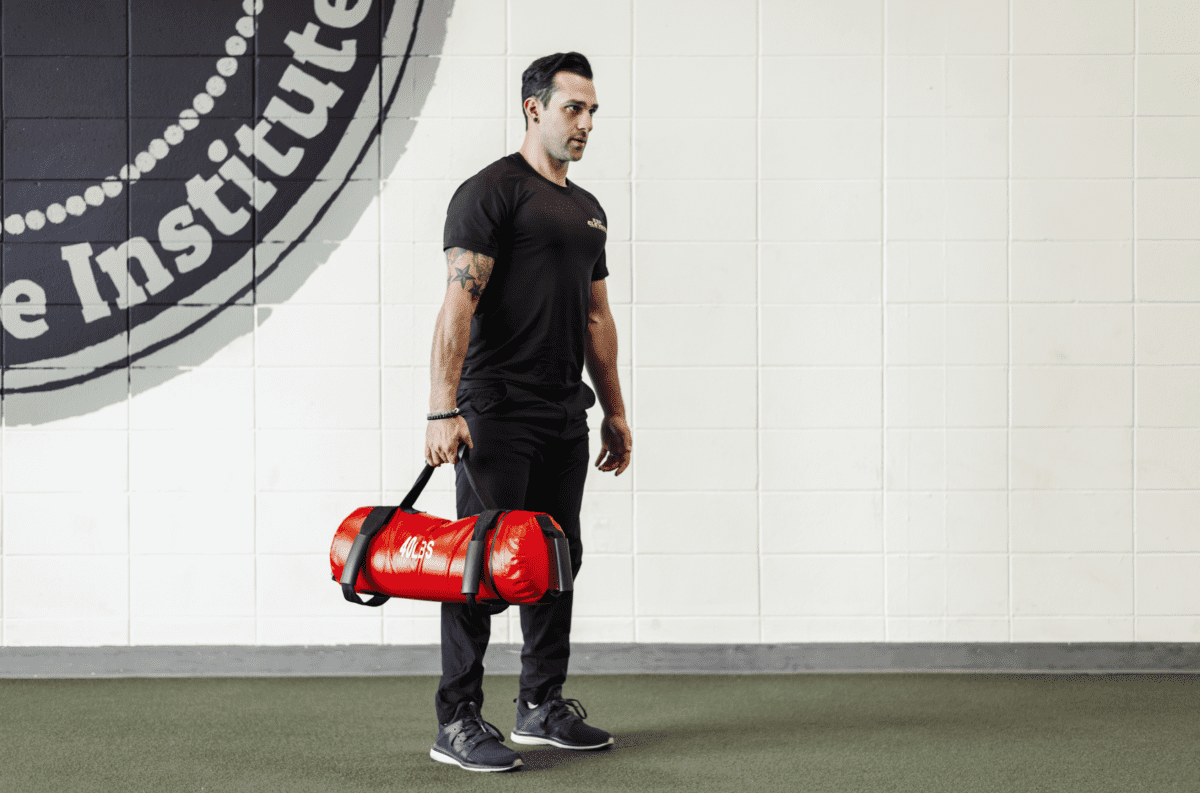Functional training has become quite the buzz these days as people are looking for new ways to train and get better at what they do. But what exactly is it? Is it just a fad?
We find ourselves constantly juggling responsibilities, battling the clock, and searching for ways to simplify our daily lives. Yet, in our pursuit of efficiency and productivity, it’s easy to overlook a fundamental aspect of well-being – our physical fitness. Welcome to a journey that transcends traditional gym routines and workouts for aesthetics. Welcome to the world of “Functional Fitness To Make Life Easier.”
In this article, we embark on a quest to explore the transformative power of functional fitness, a holistic approach to exercise that not only strengthens your body but also enhances your ability to tackle everyday challenges with grace and confidence. Beyond sculpted muscles and chiseled physiques, functional fitness equips you with the tools to navigate life’s hurdles effortlessly, whether it’s carrying groceries up a flight of stairs, chasing after your kids, or excelling in your chosen sport or hobby.
We will delve deep into the philosophy of functional fitness, examining how it mimics the movements of daily life and amplifies your physical capabilities in ways that resonate far beyond the gym walls. Discover how functional fitness fosters resilience, boosts energy levels, and empowers you to maintain your independence as you age gracefully.
But this journey isn’t just about theory. We’ll provide you with practical insights, exercises, and training techniques that you can seamlessly integrate into your daily routine. These strategies will not only enhance your physical prowess but also infuse your life with newfound vitality, helping you become the best version of yourself.
So, if you’re ready to embrace a fitness approach that transcends aesthetics and focuses on making your life easier, stick with us. Let’s embark on a transformative journey into the world of functional fitness, where strength, flexibility, and balance converge to unlock a life of ease, joy, and boundless possibilities.
Although the phrase “functional training” is tossed around and labeled on top of everyone’s training programs from crossfit to yoga, it can be the most important part of everyone’s training.
Functional fitness, in essence, are full body exercises that challenge the whole body and use movement patterns that we use in everyday life. Nothing we do involves just one body part but rather a series of body parts moving in coordinated ways activated by specific muscles to achieve a specific movement – such as carrying groceries, getting the kids in and out of car seats, and swinging a golf club. Although the body is quite remarkable and gets most things done without much thought, there is an efficient way to move and use the body. If not used efficiently, over time the body starts to compensate by using movement patterns that are too taxing on certain joints, muscles or tendons. This can lead to overuse injuries or inflammation of certain areas of the body. Eventually, performing everyday tasks starts to feel painful.
The good news is that with proper training and movement education, we can learn efficient movement patterns. Through functional training, the body’s movements become more efficient, making the tasks of daily life easier and reducing the chance of pain. Also, learning proper movement mechanics will allow the body to perform at its best without the risk of injury. Not only can the general population benefit from functional training, but so to can athletes who will be able to increase their performance by correcting their movement patterns.
Bear Crawl
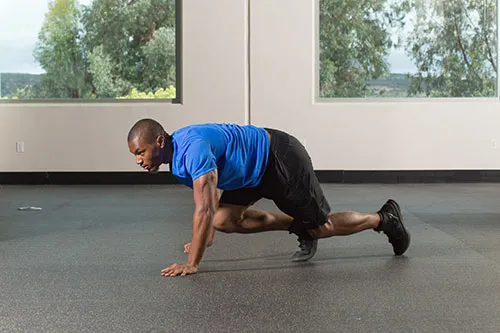
Start in the quadruped position: hands under the shoulder, knees under the hips. First, lift the knees off the ground 2-3 inches. Balance yourself on your hands and toes. Keep your ribcage tucked in while in this position, it will help to engage your core and keep your spine straight and stable. In this position, move forward by stepping with the left arm and right foot and alternate with the right arm left foot. The goal is to move the body forward with minimum side-to-side movement without lifting your butt.
Farmer Carry
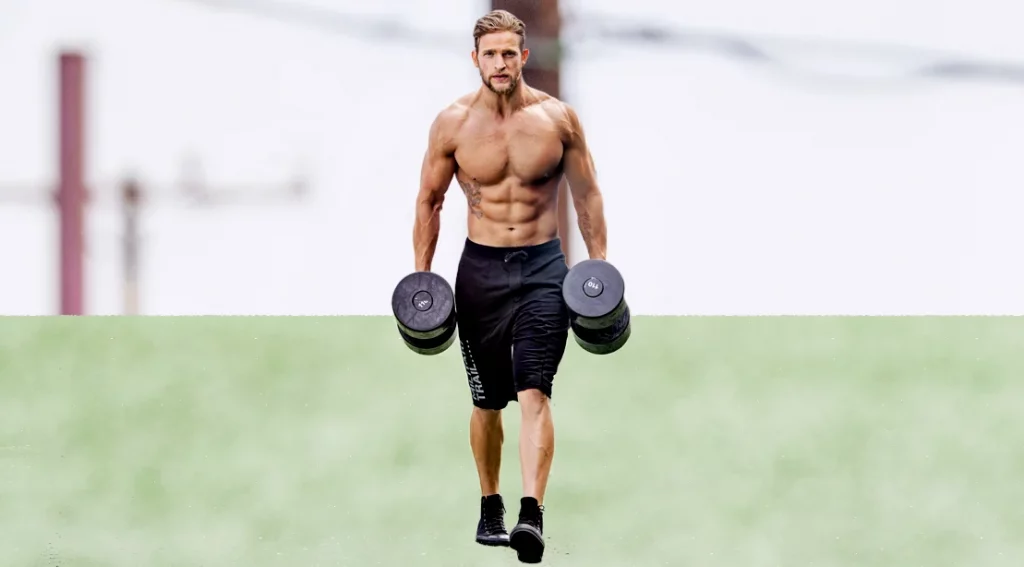
Grab 2 free weights; one on each hand. They can be dumbbells, kettlebells, or sandbags. Bring your feet underneath your hips and get your body weight on the midfoot. Weights in your hands, arms straight down at your side, get as tall as possible and get in a perfect posture. In this position, keep walking forward by controlling the weights without letting them move around too much. The goal of this exercise is being able to keep your perfect posture under a heavy load.it will also challenge your grip strength. It needs patience.
Suitcase Deadlift
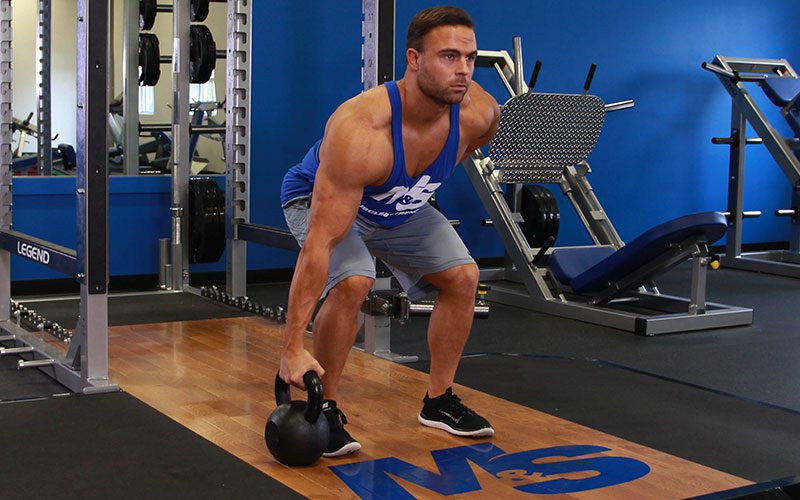
This is a variation of a conventional deadlift. Grab a free weight. I could be barbell, dumbbell, kettlebell, or sandbag. Keep the weight lateral to your body on one side, keeping the weight on the ground and stand tall. Keep your feet underneath your hips and you’re your body weight on the midfoot. Hinge at the hips, reach down and grab the weight with the hand directly above the weight. Make sure your body is aligned and not leaning to one side. Your nose stays in line with your belly button throughout the movement. Check your shins. They need to be perpendicular to the ground. The goal is to pick up the weight up without compensating side-to-side.
Overhead Walking Lunges
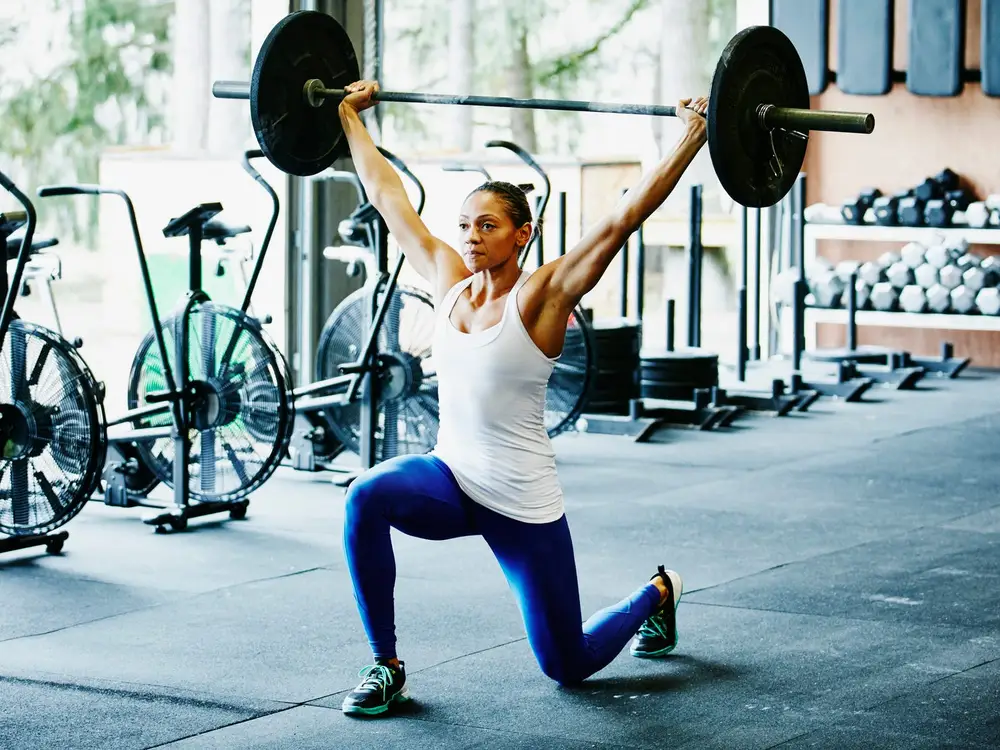
The movement can be performed a variety of ways for optimal functional training. Start the lunge by stepping forward with one foot, keeping your upper body upright and keeping your ribcage tucked in. Bring your rear foot forward to meet the lead foot in a standing position before lunging forward again. Alternate your legs with each step. The knee of your rear foot will be touching the ground or almost touching the ground with each step. This can initially be done with just your body weight. Once you feel confident with the movement, you can add 2 dumbbells by your side. And then to progress it even further, lift weights up to an overhead position. Make sure your elbows are locked, shoulder blades elevated, and arms internally rotated; creating a stable overhead position. Make sure you keep your upper body upright by keeping your rib cage tucked in.
This movement can be performed with different equipment. You can use a barbell, a sandbag, or two dumbbells or kettlebells. If you want to make it more challenging on your shoulder stabilizers use dumbbells or kettlebells. From a standing position, lift the weight up to an overhead position. Make sure your elbows are locked, shoulder blades elevated, and arms internally rotated; creating a stable overhead position. Bring your feet underneath your hips. While keeping the weight overhead, lunge forward with one foot keeping your upper body upright and keeping your ribcage tucked in. Bring your rear foot forward to meet the lead foot in a standing position before lunging forward again. Alternate your legs with each step. The knee of your rear foot will be touching the ground or almost touching the ground with each step. The goal is being able to keep a stable spine and overhead position.
Heavy Sled Push
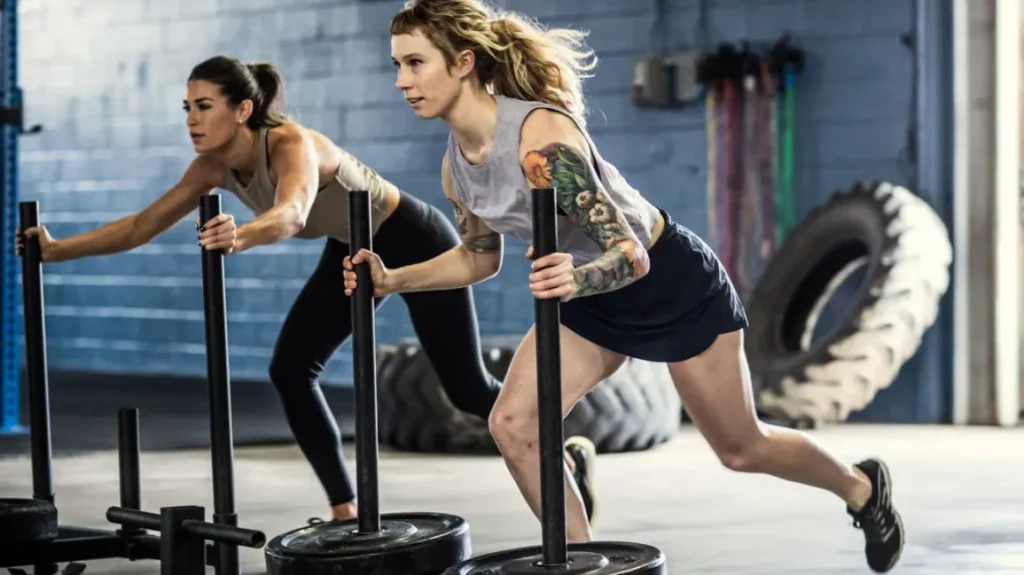
Load the sled with heavy weights to your ability. Stand behind the sled and grab the handlebars on the sled. Bend your elbows around 90 degrees. Set your shoulder blades back and down. This will create a stable upper body position. Keeping your elbows bent will allow you to stay more upright and force you to take small steps, which is what you want when you push heavy sleds. Keep your body weight on the balls of your feet. Tuck your ribcage in, brace your core, keep your back straight, and push the sled forward putting pressure on the balls of your feet. As you push, your heels will come off the ground. The goal of this functional training is to be able to keep your upper body stable as you push the heavy sled and make your legs do the work.
Article Bio
Serhat Yayla (BPE, CSCS, UEFA-B, FMS, PES, CWPC, CSAC) – Director of Sport Performance at Propel Performance Institute





